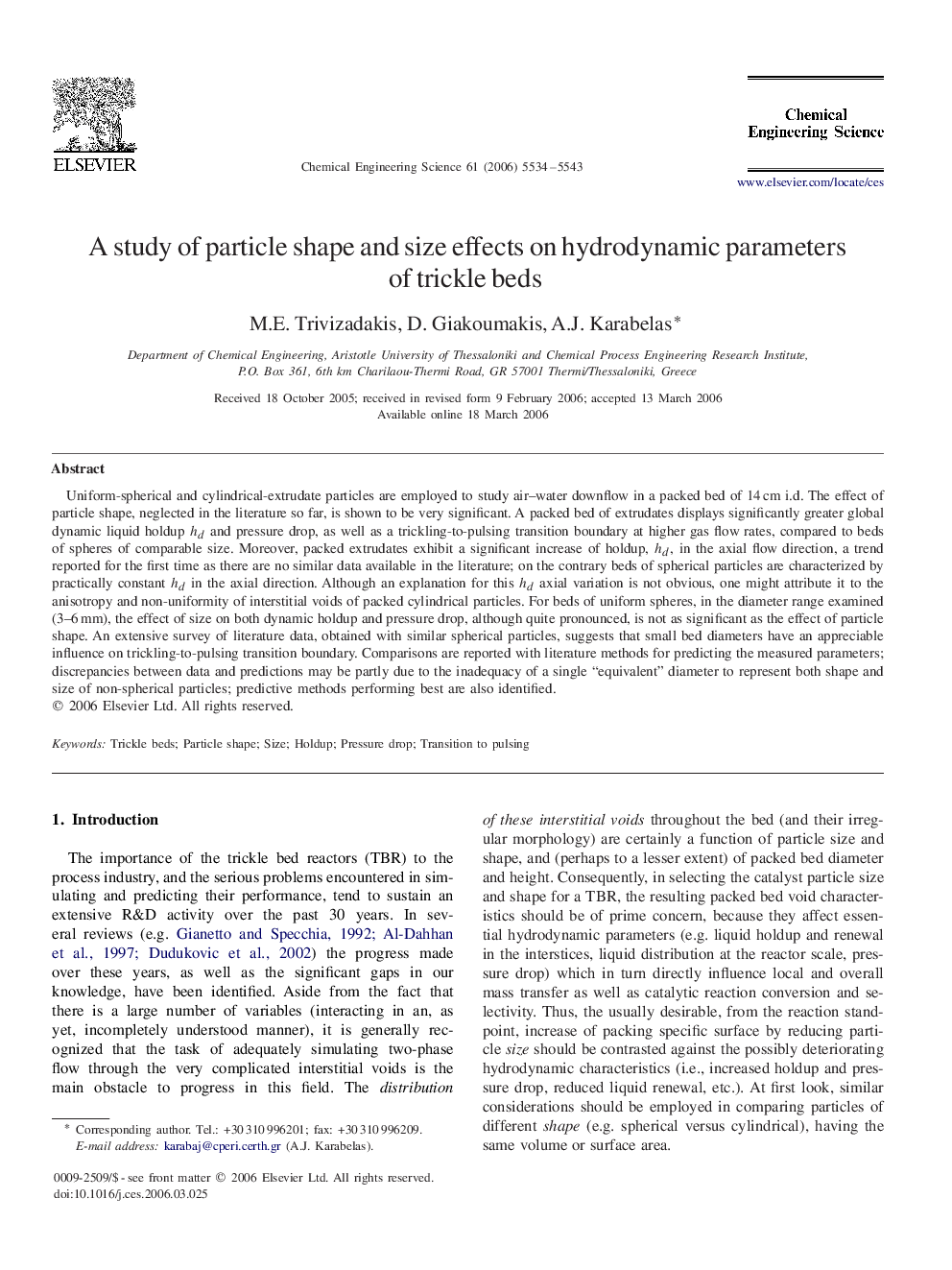| Article ID | Journal | Published Year | Pages | File Type |
|---|---|---|---|---|
| 159795 | Chemical Engineering Science | 2006 | 10 Pages |
Uniform-spherical and cylindrical-extrudate particles are employed to study air–water downflow in a packed bed of 14 cm i.d. The effect of particle shape, neglected in the literature so far, is shown to be very significant. A packed bed of extrudates displays significantly greater global dynamic liquid holdup hdhd and pressure drop, as well as a trickling-to-pulsing transition boundary at higher gas flow rates, compared to beds of spheres of comparable size. Moreover, packed extrudates exhibit a significant increase of holdup, hdhd, in the axial flow direction, a trend reported for the first time as there are no similar data available in the literature; on the contrary beds of spherical particles are characterized by practically constant hdhd in the axial direction. Although an explanation for this hdhd axial variation is not obvious, one might attribute it to the anisotropy and non-uniformity of interstitial voids of packed cylindrical particles. For beds of uniform spheres, in the diameter range examined (3–6 mm), the effect of size on both dynamic holdup and pressure drop, although quite pronounced, is not as significant as the effect of particle shape. An extensive survey of literature data, obtained with similar spherical particles, suggests that small bed diameters have an appreciable influence on trickling-to-pulsing transition boundary. Comparisons are reported with literature methods for predicting the measured parameters; discrepancies between data and predictions may be partly due to the inadequacy of a single “equivalent” diameter to represent both shape and size of non-spherical particles; predictive methods performing best are also identified.
